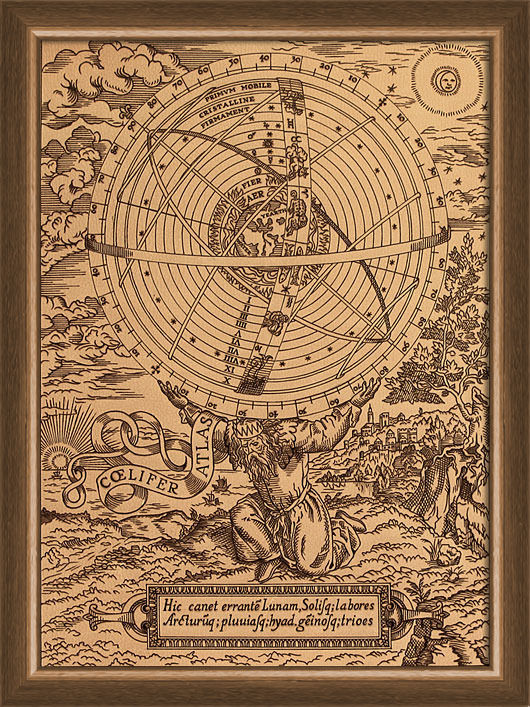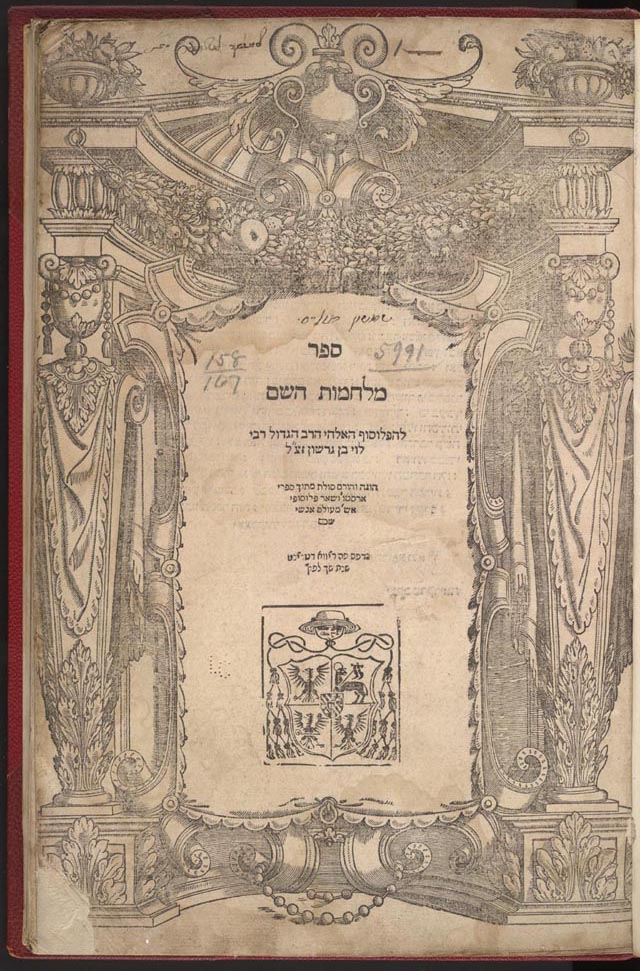With priestly modesty, the canon of Frauenburg displaced man from the center of the universe…
He was the only begetter of the Copernican Revolution, we say. He was the restorer of astronomy, a second Ptolemy, they said in the sixteenth century. Both statements are true, and between them they did tell us much about the difference between the scientific outlook of our day and that of his day as they do about the man they honor. And in the making of this difference, Copernicus, or rather his ideas, played a vital role.

—The picture of the universe supported by Atlas, in William Cuningham’s THE COSMOGRAPHICAL GLASSE published in 1559, shows how much “Western” astronomical tradition confused the model of the universe as in the armillary sphere with reality – a concept that persisted from the 3rd century BC to the mid-17th century. —click image for source…
Not that this was his intention. The only revolution he visualized was that incorporated into the title of his last great work, of which, tradition says, a copy was placed in his hands on his deathbed. On the Revolutions of the Celestial Spheres it was called- De revolutionibus it has ever since been called for convenience. Like most truly important scientific works, its greatest impact on men’s minds was delayed until lesser men had worked on it; like any seminal work on physical science, it was difficult, highly technical in exposition, and had an influence far beyond those who could understand it.
The basic idea was simple, and in an age when astronomy was the science whose rudiments were most widely understood by the lay public, readily comprehensible- as was the implication for astronomy if the idea was accepted. “The fool will turn the whole science of astronomy upside down,” said another intellectual revolutionary, Martin Luther, not realizing that this was what astronomy required….( to be continued)…

—Written in the fourteenth century, this philosophical work incorporates in its fifth chapter the astronomical theories of Levi ben Gershom (1288-1344), one of the greatest medieval astronomers. Gershom’s major contributions to astronomy included the invention of the “Jacob’s Staff,” an instrument that measured visual angles. On the basis of observations made possible by the new invention, he was able to make essential adjustments and corrections to the Ptolemaic system. —Read More:http://www.loc.gov/exhibits/world/heavens.html





 COMMENTS
COMMENTS